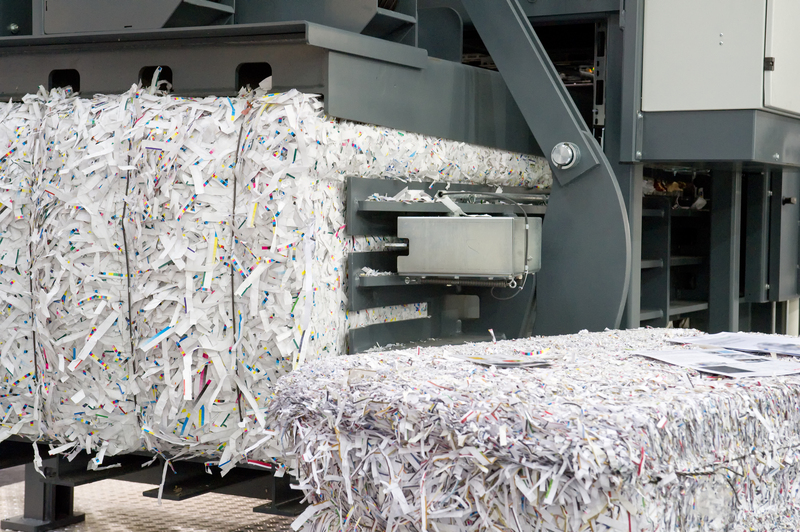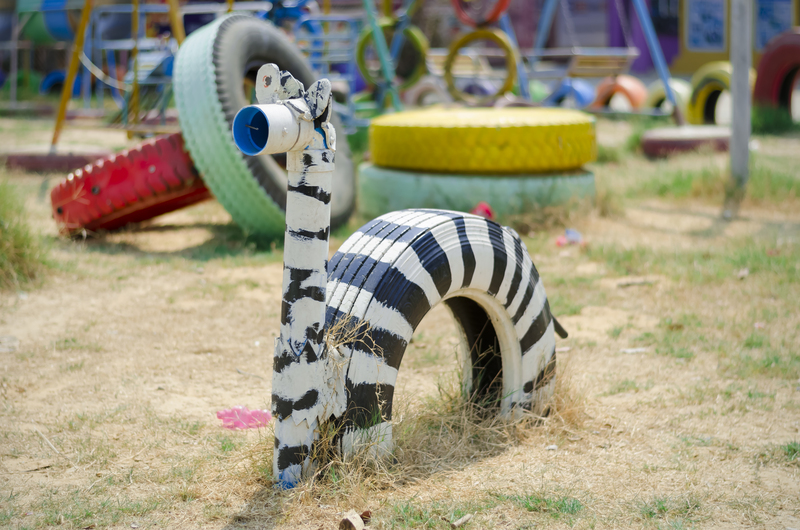How to Prevent PPE Waste from Polluting Your Community
In the wake of global health crises such as the COVID-19 pandemic, Personal Protective Equipment (PPE) has become an everyday necessity. Face masks, gloves, and face shields have been crucial in safeguarding our health. However, the sudden surge in the use of disposable PPE has led to a new challenge -- unprecedented amounts of PPE waste polluting our neighborhoods, waterways, and public spaces. If not addressed, PPE pollution can have lasting consequences on public health and the environment.
This comprehensive article will guide you on how to prevent PPE waste from polluting your community. By understanding the dangers, adopting best practices, and participating in collective action, you can be part of the solution. Let's delve in and explore effective strategies and tips to handle PPE waste responsibly.
Understanding the Impact of PPE Waste in Your Community
PPE is designed to protect us, but once used, it can become a hazardous pollutant if not disposed of correctly. Here's why preventing PPE pollution is vital:
- Environmental Harm: The vast majority of PPE--such as masks and gloves--are made of synthetic materials like polypropylene, which are non-biodegradable. These materials can persist in the environment for decades and contribute to microplastic pollution.
- Threat to Wildlife: Discarded PPE items are often mistaken for food by birds, marine life, and animals, leading to ingestion, strangulation, or death.
- Public Health Risk: Used PPE can harbor pathogens, potentially spreading disease in your community if not handled and disposed of properly.
- Visual Pollution: Littered masks and gloves tarnish the appearance of streets, parks, and beaches, negatively impacting community morale and tourism.
The Scale of PPE Pollution
Reports suggest that an estimated 129 billion face masks are used globally per month, with billions being improperly discarded. It is clear that PPE waste management is now an urgent environmental and public health concern that communities must actively combat.

Best Practices for Responsible PPE Disposal
Optimizing the way we handle used PPE is the cornerstone of preventing it from becoming community litter. Follow these essential tips to prevent PPE waste from polluting where you live:
1. Always Use Designated PPE Disposal Bins
- Look for Special Bins: Many municipalities have set up specialized bins for PPE, often lined with heavy-duty liners for safe containment.
- Do Not Recycle Disposable PPE: Disposable face masks and gloves should not be placed in recycling bins as they contaminate recyclable streams and endanger recycling workers.
- Proper Sealing: If special bins are unavailable, double-bag used PPE, seal it securely, and dispose of it in general waste.
2. Educate Your Community on PPE Waste Management
- Run Awareness Campaigns: Organize workshops, webinars, or distribute educational leaflets about PPE pollution and safe disposal.
- Signage: Place clear, visual instructions on bin lids, parks, and public spaces to remind everyone of the proper disposal procedures.
- Lead by Example: Practice and promote correct PPE disposal habits to influence those around you.
3. Choose Reusable PPE Options Whenever Possible
- Use Cloth Masks: Opt for washable and reusable face coverings that significantly reduce single-use waste.
- Durable Shields: Invest in sturdy, cleanable face shields instead of disposable alternatives.
- Educate on Sterilization: Inform your community about proper cleaning and storage methods for reusable PPE.
4. Organize Community PPE Waste Collection Drives
- Monthly Cleanups: Arrange community events focused on collecting littered PPE in parks, streets, and waterways.
- Involve Local Authorities: Work together with local government and environmental organizations for resources and support.
- Volunteer Efforts: Encourage youth groups and schools to take part in waste pick-up drives.
Implementing PPE Waste Prevention in Public Spaces
Public places such as markets, parks, schools, and transit hubs are hotspots for PPE waste. Here's how to proactively prevent PPE pollution in these areas:
1. Increase the Number of Waste Bins
- Strategic Placement: Place bins at entrances, exits, and high-traffic zones to make disposal easy and convenient.
- Regular Emptying: Schedule frequent waste collection to prevent bins from overflowing and deterring proper use.
2. Encourage Responsible Disposal through Policy
- City Ordinances: Advocate for local laws mandating correct PPE disposal and penalizing littering.
- Business Engagement: Work with local businesses to provide in-store PPE disposal options and training for staff.
3. Leverage Technology
- Smart Bins: Install sensor-enabled bins that notify authorities when they are full.
- Mobile Apps: Develop or utilize apps that let users report PPE waste hotspots for faster clean-up.
Home-Based Strategies to Prevent PPE Waste Pollution
Responsible PPE waste management starts at home. Here's how every household can reduce their contribution to PPE litter:
1. Adopt a 'Less is More' Approach
- Evaluate Your Needs: Use PPE only when necessary according to public health guidelines to reduce unnecessary waste.
- Inventory Management: Avoid stockpiling excess disposable PPE that may expire or go unused.
2. Build a Dedicated PPE Disposal Routine
- Designate a Waste Bin: Keep a bin specifically for used masks and gloves in a convenient spot in your household.
- Encourage Family Participation: Teach children and elderly members about proper handling and disposal.
- Safe Handling: Always wash hands after disposing of used PPE. If possible, wear gloves and avoid direct contact.
3. Explore PPE Disposal Innovations
- PPE Recycling Programs: Some companies and local governments are pioneering programs to recycle masks and gloves. Stay informed and participate when available.
- Eco-Friendly Products: Use biodegradable or compostable PPE if accessible in your area.
Engaging the Wider Community Against PPE Waste
Community engagement is crucial to create a wider impact in the battle against PPE pollution. Here are ways to foster collective responsibility:
1. Launch Grassroots Campaigns
- Storytelling: Share impactful stories on social media about the dangers of PPE litter and how individuals are making a difference.
- Collaborate: Partner with NGOs, schools, and environmental clubs for greater reach and effectiveness.
2. Incentivize Good Practices
- Recognition Programs: Give awards to communities, neighborhoods, or businesses demonstrating the best PPE waste management.
- Reward Schemes: Offer discounts, coupons, or small rewards for those who return used PPE for proper disposal.
3. Advocate for Stronger Regulations and Facilities
- Policy Advocacy: Petition local councils for more stringent anti-littering laws and better waste management infrastructure.
- Monitoring: Encourage the installation of CCTV in litter-prone areas to identify and deter violators.

Innovations and Future Trends in PPE Waste Management
The environmental crisis caused by PPE has spurred innovations in materials, recycling, and waste processes. Consider supporting or adopting these advancements to further prevent PPE litter in your community:
- Biodegradable PPE: Researchers have developed compostable masks and gloves from materials like corn starch and bamboo fiber.
- PPE to Energy: Some nations are experimenting with converting waste PPE into fuel or using pyrolysis to break down plastics safely.
- Recycling Technologies: Companies like TerraCycle collect and recycle PPE into raw plastic materials.
- Awareness Tech: Online mapping tools now track PPE waste hotspots, guiding clean-up efforts.
Conclusion: Everyone Can Help Prevent PPE Pollution
Learning how to prevent PPE waste from polluting your community is everyone's responsibility. By leveraging proper disposal, choosing sustainable options, educating others, organizing clean-ups, and supporting new technologies, you can make a tangible difference in your environment.
As our reliance on PPE continues for health reasons, it is crucial to deal with PPE waste in a way that protects both people and nature. Let's work together to keep our communities clean, healthy, and resilient - now and in the future.
Quick Checklist for Preventing PPE Pollution
- Always dispose of used PPE in the correct bins.
- Educate family, friends, and neighbors on proper PPE waste management.
- Use reusable masks and face shields when possible.
- Organize or join community clean-ups.
- Stay informed about innovative PPE disposal programs.
Remember: Every small action counts in the fight against PPE pollution. Protect yourself, protect your community, and protect the planet.